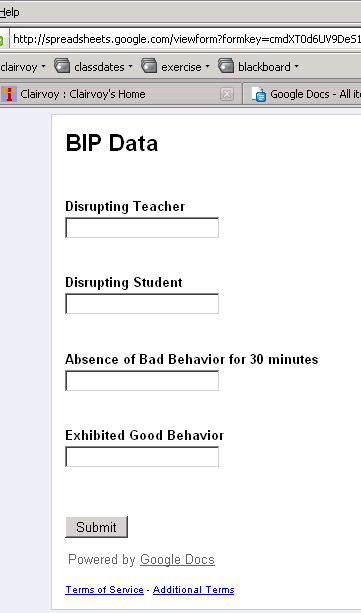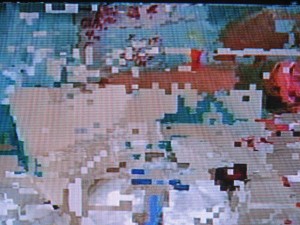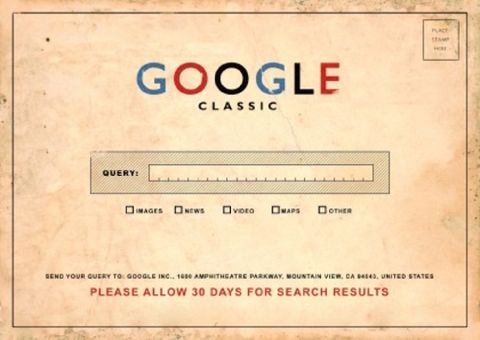Digital garble just doesn’t have the same je ne sais quoi.
Category Archives: instruction
21 Things That Will Be Obsolete in 2020? Try 2010.
21 Things That Will Become Obsolete in Education by 2020 is a post in Teach Paperless, a blog by Shelly Blake-Plock. It’s a great blog about teaching. I love how this guy thinks.
I’m reading this post in teachpaperless and I’m thinking, “Why write about it, just do it.” (I know, to share, to share …)
Here’s the list from Teachpaperless of 21 things that will be obsolete over the next 10 years, and what we (at a Title One elementary school outside Washington, D.C.) are doing about them today.
I’ve put the items teach paperless stated would be obsolete in bold. I agree with all of them, save two (numbers 8 & 9).
The following is not bragging, I’m just stating the facts about the school at which I’m lucky enough to work:
1. Desks: A 5th grade teacher here removed all desks from her room two years ago. She did a research project to track data on student performance. She has not asked for the furniture back.
2. Language Labs: Hah! Forget ESOL, try finding an ETMT student (English as Their Mother Tongue). This whole school is a language lab, and if the demographers are correct so will be most U.S. schools in the future. We don’t have a separate language lab as a result.
3. Computers: The majority of our computers are laptops, and going forward we are trying the netbooks and the next step. School-system finances and classroom real estate both being at a premium, small and mobile is where everything is going, not just computing.
4. Homework: We’re going 24/7 using Blackboard (2 & 3) in the lower grades and wordpress/blogspot & wikispaces in the upper grades (3, 4 & 5). Students are doing work at home without being asked. That’s the real power of social media. A 5th grade teacher is currently doing educational research on best practices for homework, which is NOT the way it used to be done, more along the line of teachpaperless.
5. Standardized Tests: This is a hot topic, the details of which I will cover in an upcoming post. But we are very much moving toward portfolios as a large percentage of our students (compared with other schools) do a portfolio replacement test for the standardized tests.
6. Differentiated Instruction as Unique: We’re already far beyond this and our teachers differentiate due to language, learning styles and/or special needs. We have an inclusive model which requires real and meaningful differentiation as a fundamental baseline to everything happening in a classroom or other part of the school, rather than an afterthought or “something the special ed teacher do” (which unfortunately is what many teachers around the world think).
7. Fear of Wikipedia: We use it as a method to teach critical reading skills. And by “critical” we mean “with a discerning eye.”
*8. Paperbacks: Here is the one thing with which I don’t agree. Radio was to be the end of newspapers, and radio theater the end of paperbacks. Television was to be the end of Radio, and Computers the end of everything that came before. People will consume information in a way that is most useful and although the percentage of market share changes we have a ways to go before books go the way of papyrus scrolls.
*9. Attendance Offices: Bio scans are great, but there will still be a frazzled office person handing out tardy slips and calling home to confirm children’s whereabouts.
10. Lockers: Well, didn’t need them anyway.
11. IT Departments: According to TeachPaperless, IT Departments will have more time to innovate as they give up control and budget-line to shared-open solutions. A lovely sentiment, and clear-headed if one remembers fondly how there didn’t really seem to be anyone in charge of IT on the Star Ship Enterprise. But the thought of the obsessive, slightly asburger-y engineers (the norm in most IT departments) being “innovative”, well, let’s not be silly now.
12. Centralized Institutions: He’s right on the mark. He’s talking about school buildings being like a factory where students show up for a shift. I would also include decentralizing central offices. “Employees who do not spend at least 10 hours a week with student should be sacked,” is a budget solution suggested by one of the teachers at my school. All “central office” types should be housed in schools. That way they might accidentally run into a student every now and then. At our school we house central office types, and it helps them understand the school and students, and helps us by having them more accessible.
13. Organization of Educational Service by Grade: We’re already doing this by necessity, because when one successfully differentiates, it’s done.
14. Education School Classes that Fail to Integrate Social Technology: I agree, but would reword this to say the following will be obsolete in two years, “Education School Classes that Can Successfully Continue to Keep Social Technology Out.” (I mean MiFi kind of screws up all the “firewall technology” on which we are currently spending money.)
15. Paid/Outsourced Professional Development: Our school has a specific model which is co-teaching, coaching and inclusive. One can walk into any room at any time and nobody bats an eyelash. The kids and teachers are used to constant traffic. This raises the bar, because no one can go into their room, shut the door and come out in June. Professional accountability which includes an AP coming in twice a year is ridiculous. Constant feedback on everything at all times is what professional development is now and going forward. Implementing it is the hard part. We have. There’s still a place for Paid/Outsourced PD, but the guts of our PD is inhouse PLC, and it works.
16. Current Curricular Norms: We’re doing this, but it is easier in a K-5 environment. Differentiation demands it.
17. Parent-Teacher Conference Night: More and more classroom blogs are cropping up at my school. These keep the parents in the loop in an ongoing way. One instance (not at this school) is an individual blog being used for a special needs student instead of a journal they take from home to school and back. The dialog is deep and meaningful and discrete. A reality to which I think Blake-Plock is alluding.
18.Typical Cafeteria Food: We’ve made no great inroads here, but one can only hope.
19. Outsourced Graphic Design and Webmastering: Here again is a tension between the creative flow in a school and the need of many DIT departments to assert control claiming “Internet Security” as the cover. In the future, with social media becoming a utility, and technology becoming ubiquitous, “Internet Security” emanating from within a technology department as a firewall or other technology will not be possible. “Internet Security” will principally be achieved through behavior management by education of students from Kindergarten forward. Our 3rd and 4th graders are doing MySpace and Facebook pages at home already. They are doing google pages, blogspot and wordpress at school. Given the tools, they could do what Blake-Plock is suggesting next week, but current technology setup of our formal graphic design and webmastering prevents this.
20. High School Algebra I: OK, well, N/A for this K-5 school.
21. Paper: In the last three years, we have moved from a deskjet at every teacher’s desk to a small set of networked centralized printers. Paper use (and toner) has declined exponentially.
Thanks to Blake-Plock and TeachPaperless.blogspot.com for everything they are doing to support the mission.
Good Passwords

A good reminder about passwords is important from time to time:
1) Passwords should be six characters or longer.
2) Incorporate random capital letters, swaps letters for numbers (like vanity license plates) and includes a symbol or two. The password “password” (which you should not use) is much stronger as “r1Va’5paZZw8rD.”
3) Don’t use names of pets, children or streets. It’s better to use a phrase, song lyric or line from a poem as the base. “Hey Jude, don’t make it bad” could become “d9n’Tmak%6aad.” Base the password on the first letter of each word, turning the lyric into “HJ,dmi6.”
For more, read Microsoft’s advice.
For those of you with Macs, get 1password, it is a program that saves all your passwords and backs them up. That way, you will never forget a password.
To make things easier, use the same username for everything.
And the security wonks aren’t going to like the next thing I’m going to say: Here’s the main thing. If what you are doing isn’t about money, use the same password for everything. It’s not worth trying to remember.
But with 1password you don’t have to. I use an independently generated 26 alfa-numeric password for everything. 1password is a beautiful thing.
Mark
Inserting The Editorial Process into Clairvoy

Where We Came From:
Clairvoy (now Traditional Clairvoy) started out as a blog with five teachers giving advise to other teachers who submitted questions. We still get messages from teachers all over the world. We’ve grown to a site with blogs, wikis, forums, articles and file sharing. More than 1000 pages of different content and nearly 800 registered users. We have a new site for teacher research called Education Study Group. However, most of our visitors don’t sign in. People just read.
On commercial sites like YouTube and Wikipedia, less than 3% of users post content. A much larger percentage (but much smaller number, of course) of our users contribute content.
For instance, as I write this 75 people are visiting Clairvoy (much the same as any time of day-even at 3am!). I can’t see who you are or what you’re doing (which drives me crazy) because most folks don’t login. Most just read. But you all seem to be getting some benefit, and that’s great.
We’ve been focused from day one on the content, “Teachers Trading Strategy in Bite Sized Pieces” and that’s not changing. But since we started (at a time when “what?” was the only response we ever got to a sentence containing the words ‘blog’ or ‘wiki’) we also functioned by default as a “sandbox” mashup of all the available technologies for teachers to learn how to use these new web2.0 thingamajigs. Things have grown up around us. With the right safety training, Wikispaces is great for teachers and students as are Google Sites, Blogger, and WordPress.com. You all know more today than you did just a few years ago. Even Twitter is now a household word.
Where We Are Going:
We are staying focused on trading educational strategy, The “what we do” and “our values” pages will not change. Our strategy is to better harness contributions of our users and create more meaningful and useful content. As a result, we have made some improvements to Clairvoy which will be steps toward the goal of better serving your needs:
One: The first step is an improvement to the search function with Advanced Clairvoy Search. It’s up in the right hand corner. It’s simply Google’s engine focused and targeting Clairvoy’s sites, blogs and features. (I’ve never said we’re creating a new wheel here folks.) There’s an even more advanced targeted and detailed search available on the main menu under “Search.”
Two: The second step is a stronger editorial process on the wiki. Everyone will still be able to contribute. This feature has been implemented. The details of how that works are below.
Three: The third step is we have introduced an “Articles” feature for documents and reviews of scholarly articles. These differ from wiki pages in that they will not be changing. It is a process for educators to provide peer reviewed information in longer format. As well as to collect reviews of scholarly papers which could help educators. This feature has been implemented.
Four: The forth step will be making the Clairvoy Blogs more robust. We have recently employed the same technology used by WordPress.com. Over the coming months we will be adding all the features and functionality available.
The Editorial Process:
I wrote recently about the Writing Process and Open Collaborative Internet Tools.
MOZILLA, the folks behind Firefox browsers, use the same open source technology Clairvoy uses for their wiki: see http://support.mozilla.com. Mozilla developed an easy to use editorial system which we are going to employ. Any wiki page created or edited is not displayed to the public until it is looked over first. The original page remains viewable until the updated version is approved and it is replaced.
If you login, you can see all the “sausage being made” with all the immediacy as always but with better labeling. If you are not logged-in, you only see the finished product. This simply will make a “drafting” area (for those logged-in) where contributions are welcome, but at the same time have the “published” knowledge base (for those not logged-in) that is extremely stable. The difference being a day or two and, we hope, greater quality and better organized content.
We’re going to give it a try. It means the pages you contribute to our wiki will be delayed for users not logged-in.
This new editorial process is just for wiki pages, not individual Clairvoy Blogs which have secondary logins for their owners to control more of the features within their own blogs.
Our values will not change and contributors who are unsure of the technology but have something to say will be helped through the process – not flamed. That has been the case and will not change.
The “Contact Us” function works now if you logged-in or not. We’ll try and be responsive to you (our readers and contributors) as we try to grow what we are doing to best serve you. Let us know what you think.
Best Tracking of Student Data (for Behavior Plans or Anything) for the Busy Teacher

This is a way to use Google Docs and an iPhone or any hand-held device that can hit the web to track student data.
Remember in Educational Research, APA ethical guidelines require no information be used which could be employed to identify the student.
1)In Google docs, open a new Spreadsheet.
2)Name columns with the items you are tracking; Disrupting Teacher; Disrupting Students; Absence of Bad Behavior for 30 minutes, for example. This will be determined by the student’s Behavior Intervention Plan or whatever research question you are tracking. Each entry you make will automatically be stamped with the time and date, so you don’t have to worry about that column.
3)On the “Form” menu of the same spreadsheet click on “Create form.” Name the form something you can remember, but not the name of the student. Then on the Form menu choose “Go to live form” which opens your form as a webpage. Along the bottom of that window is the “You can view the published form here: url” which is the web address of your live form. Make a shortcut to the live form and put that on your iPhone or whatever you want to use to enter data.
From that point on, everything you enter into the live form and save, will be entered into your spreadsheet as a row and saved for your later analysis.
On the way out, remember to Save your form, and choose File and Save your spreadsheet.Too Easy!
For extra credit, on the forms creation page, you can edit the questions and make them multiple choice or check boxes to make data entry even easier!
On Illustrating Life-Long Learning
 There is always time to show our students we are life-long learners and they should be as well. It is a fundamental part of running a constructionist classroom.
There is always time to show our students we are life-long learners and they should be as well. It is a fundamental part of running a constructionist classroom.
“I didn’t learn until just now, simile is called a simile because it is “similar.”
from a second grade teacher shared with her class.
“It wasn’t till my 30s that I realized the “arbitrary” division symbol showed two dots DIVIDED by a line.”



